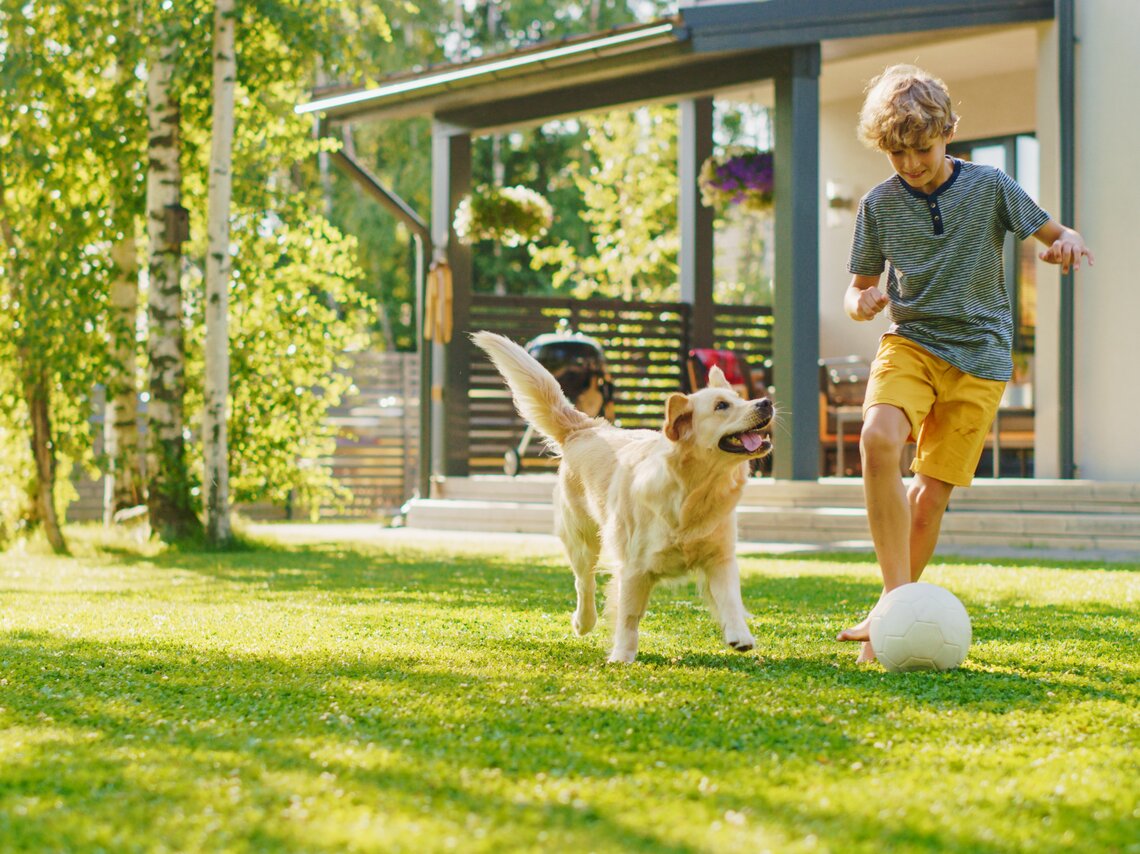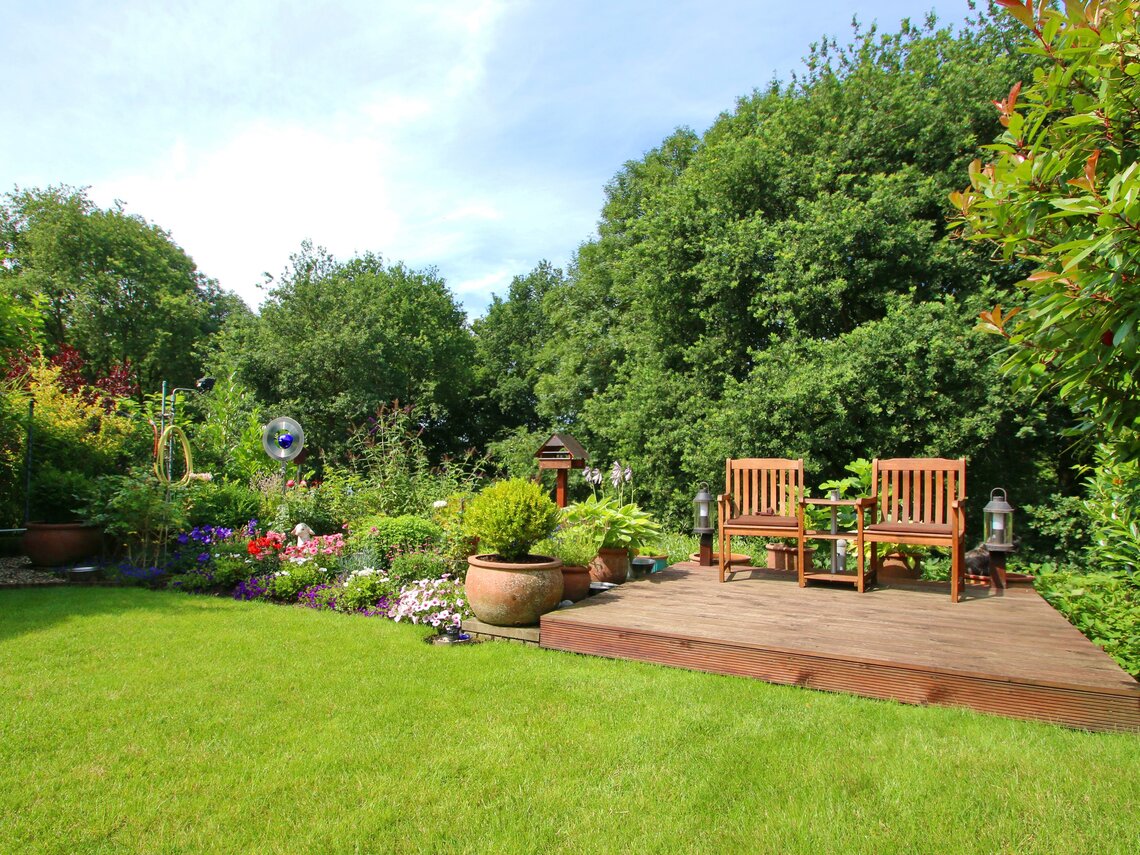EuroGrass Summer Lawn


In this lawn mixture, we have combined types of grass that are very well suited to sunny and dry locations. The varieties used are frugal in terms of water consumption and your lawn stays green longer with this mixture than other lawns - even with little rain and direct sunlight.
EuroGrass lawn seed comes directly from the turfgrass breeder and contains only premium grasses. Due to the special composition, our Summer Lawn is suitable for gardens in which the sun predominates. The selected grass species tolerate direct sunlight and drought better than others. The lawn should not be cut too short so that it can form a dense green. This grass mixture is successfully tested in southern Europe. EuroGrass Summer Lawn - the best answer to hot and dry condition.
Suitable for robotic lawn mowers
This lawn mixture is well suited for robotic mowers, as they promote lawn density through constant cutting.
New plant: 25 - 30 g/m²
Overseeding: 15 - 20 g/m²
65% tall fescue, varietys that is particularly suitable for drought and sun
20% perennial ryegrass, for good resilience
15% kentucky bluegrass, for endurance



A new planting is usually carried out when there has been soil movement (new construction areas, conversions) or the condition of the existing lawn is so bad that reseeding is not sufficient. The best time to lay out a new lawn is in spring, from mid-April/May to the end of September, depending on the weather. Optimum germination conditions include a soil temperature of 15-25 °C and mild weather with occasional rainfall. In order for a new system to be successful, the soil on these areas must be carefully prepared.
To do this, the following steps must be taken into account:
![]()
First, the area must be dug up so that existing soil compaction dissolves and a crumbly topsoil is created. The loosening of the soil means that rain and irrigation water seep away better. Finally, plant remains, branches and stones should be removed from the area. In the event that heavy construction machinery was parked on the area, deep loosening should be considered. This can either be done by yourself or by garden specialists.
![]()
The area must then be leveled. You can use a rake for this. After leveling, the soil needs to settle over a few weeks. You can speed up this process a bit by using a light roller. The so-called settling of the soil is very important for the young seeds so that they do not encounter excessively large cavities (soil pores) that hinder growth.
![]()
The seed is sown on the well reconsolidated, finely crumbly and dry soil when there is no wind and no precipitation. Calculate the amount of seed required for your area. For smaller areas, sowing can be done by hand. For larger areas, however, it is advisable to add a spreader. The advantage here is that sowing is particularly even. It is generally advisable to first sow the soil lengthwise and then crosswise.
![]()
After sowing, the seed must be incorporated about 1 cm deep into the soil. The incorporation ensures that the seed is covered, promotes germination conditions and enables the seed to emerge quickly and evenly.
![]()
After the seed has been worked in, the soil should be pressed down with a light roller so that the seedling has optimal soil contact and can establish itself through rapid root formation.
![]()
During the first few weeks it is particularly important to keep the top layer of soil moist so that the seedling does not dry out. Due to the different germination times of individual types of lawn, watering should last three to four weeks. If it is very dry, the soil needs to be watered every day. Make sure that the watering does not wash away the lawn seed. Regular and controlled watering is one of the central measures for a successful new plant.
If your area has "greened", the first cut should be made at a height of approx. 10 cm. With this cut, it is particularly important that the blades of the lawn mower used are very sharp, as the weakly rooted plants can easily be torn out. The recommended height of the first cut is 4-5 cm.
![]()
Scarifying removes dead plant parts (felt) and moss from the lawn. If there is a lot of moss or thatch, it is advisable to scarify the lawn several times lengthwise and crosswise. The plant remains that have been worked out must then be thoroughly removed. This opens up the lawn and allows the reseeding to make contact with the ground. At the end of the work step, the floor should be leveled if there are any bumps.
![]()
The EuroGrass seed packaging has a practical pouring opening. Open this and sow by hand by walking evenly across the lawn as shown in the illustration and scattering the seed. A spreader is ideal for larger areas, as this allows for particularly even sowing. These can be borrowed from good garden stores.
![]()
Seeds need good ground contact for successful germination. One possibility is the addition of a roller with which the surface can be worked. By pressing the seeds can establish themselves better in the stand.
![]()
Within the first few weeks, the root system of the seedlings is poorly developed. During this time, it is particularly important to ensure a regulated water supply. The top layer of soil should always be sufficiently moist so that the lawn seedlings do not dry out. Irrigation is one of the central measures for a successful establishment of overseeding.
![]()
The period of the first cut largely depends on the establishment of the reseeding. It is generally recommended to mow the lawn for the first time after about four weeks from a height of 8-10 cm. With this cut, it is particularly important that the blades of the lawn mower used are very sharp, as the weakly rooted seedlings can easily be torn out. Regular mowing is an important management measure in lawn care. This ensures that a densely growing lawn forms and the unwanted plants are suppressed.
![]()
The "rule of thirds" dictates when and how often a lawn should be cut. Depending on how the lawn is used and the recommended cutting height, a maximum of 1/3 of the leaf mass should be mowed off. If the cutting height is too low, unwanted lawn grass and plants will be encouraged to migrate. Likewise, a deep cut in the shaded area favors the immigration of mosses.